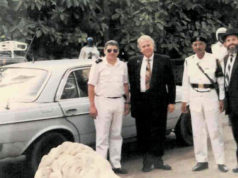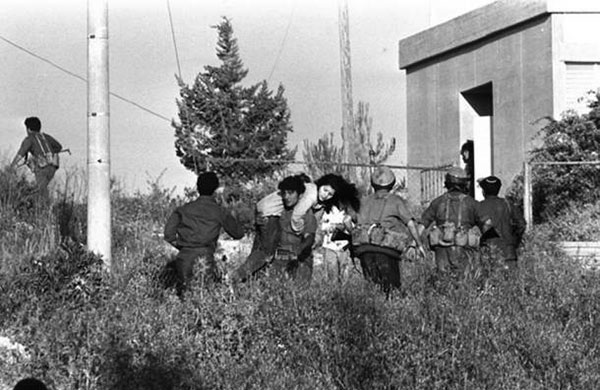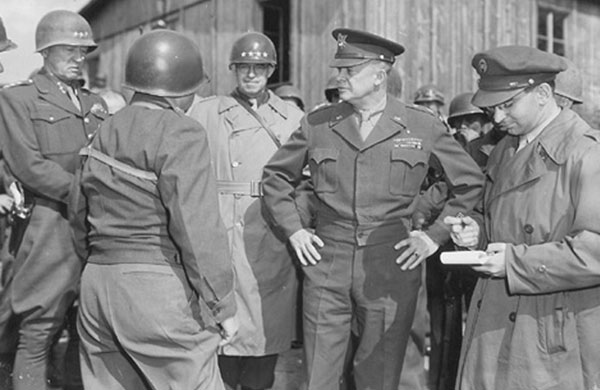 At its height, the number of Jewish citizens in Ireland only reached 5,000, so why does Ireland need a museum to celebrate a community that today numbers just over 1,000? The answer to this question is long and beautiful. Ireland needs a Jewish museum to celebrate the miracle of Jewish survival in an Irish context, to celebrate the disproportionate contribution to Irish society made by this tiny community in politics, the law, medicine, academia, the professions, the arts, music and culture; to inform the wider Irish community about the Irish Jewish experience; to serve as a beacon of cultural diversity; to show how a small ethnic community can flourish in the wider society; to celebrate thousands of years of Jewish culture and language; to educate toward tolerance and diversity and to combat anti-Semitism, racism and xenophobia.
At its height, the number of Jewish citizens in Ireland only reached 5,000, so why does Ireland need a museum to celebrate a community that today numbers just over 1,000? The answer to this question is long and beautiful. Ireland needs a Jewish museum to celebrate the miracle of Jewish survival in an Irish context, to celebrate the disproportionate contribution to Irish society made by this tiny community in politics, the law, medicine, academia, the professions, the arts, music and culture; to inform the wider Irish community about the Irish Jewish experience; to serve as a beacon of cultural diversity; to show how a small ethnic community can flourish in the wider society; to celebrate thousands of years of Jewish culture and language; to educate toward tolerance and diversity and to combat anti-Semitism, racism and xenophobia.
 In 1984, Asher Benson, Harold Muschatt, L. Shepps, Ramon Eppel, Juliet Eppel, Karen Eppel, Jacqueline Wine, Dr. J. Tolkin and others organized a successful antique fair of Jewish artifacts and memorabilia in Dublin. When the question arose of what to do with the exhibits once the fair closed, Raphael Siev proposed turning the empty Walworth Road Synagogue into the Irish Jewish Museum. The interior of the synagogue was restored to its original state, and a home was found where the unique historical and cultural heritage of Ireland’s Jewish community could be celebrated with pride. Without the single-minded dedication of the Siev family, and of Raphael Siev who served as curator until his death in 2009, the Irish Jewish Museum could never have made the transition from aspiration to reality.
In 1984, Asher Benson, Harold Muschatt, L. Shepps, Ramon Eppel, Juliet Eppel, Karen Eppel, Jacqueline Wine, Dr. J. Tolkin and others organized a successful antique fair of Jewish artifacts and memorabilia in Dublin. When the question arose of what to do with the exhibits once the fair closed, Raphael Siev proposed turning the empty Walworth Road Synagogue into the Irish Jewish Museum. The interior of the synagogue was restored to its original state, and a home was found where the unique historical and cultural heritage of Ireland’s Jewish community could be celebrated with pride. Without the single-minded dedication of the Siev family, and of Raphael Siev who served as curator until his death in 2009, the Irish Jewish Museum could never have made the transition from aspiration to reality.
 The area around the museum once had a proportionately large Jewish population, so that some of the streets around it were known as Little Jerusalem. Due to the drift of the Jewish population from Portobello and Little Jerusalem to the suburbs of south Dublin, the synagogue fell into disuse and stopped functioning around 1970. The premises were locked for almost 15 years, but the building was brought back to life by the Irish Jewish Museum Committee in 1984. The museum was opened by the Irish-born former President of Israel, Dr Chaim Herzog, during a state visit to Ireland the following year.
The area around the museum once had a proportionately large Jewish population, so that some of the streets around it were known as Little Jerusalem. Due to the drift of the Jewish population from Portobello and Little Jerusalem to the suburbs of south Dublin, the synagogue fell into disuse and stopped functioning around 1970. The premises were locked for almost 15 years, but the building was brought back to life by the Irish Jewish Museum Committee in 1984. The museum was opened by the Irish-born former President of Israel, Dr Chaim Herzog, during a state visit to Ireland the following year.
 The museum is divided into several areas. In the entrance area and corridors there is are displays of photographs, paintings, certificates and testimonials. On the ground floor, the museum preserves an important part of Ireland’s cultural and historic heritage, with a collection of memorabilia relating to Ireland’s Jewish communities and their associations and contributions to present-day Ireland. The material relates to the last 150 years and tells the stories of Jewish communities not just in Dublin but also in Belfast, Cork, Derry, Drogheda, Limerick and Waterford.
The museum is divided into several areas. In the entrance area and corridors there is are displays of photographs, paintings, certificates and testimonials. On the ground floor, the museum preserves an important part of Ireland’s cultural and historic heritage, with a collection of memorabilia relating to Ireland’s Jewish communities and their associations and contributions to present-day Ireland. The material relates to the last 150 years and tells the stories of Jewish communities not just in Dublin but also in Belfast, Cork, Derry, Drogheda, Limerick and Waterford.
The exhibits include memorabilia and photographs from Dublin’s many synagogues, including the now-closed synagogues on Adelaide Road and the South Circular Road (Greenville Hall).
 There are photographs of famous Jewish politicians and judges, including Mr Justice Henry Barron, Otto Yaffe, who became the first Jewish Lord Mayor of Belfast in 1899, Bob Briscoe, the first Jewish Lord Mayor of Dublin in 1956, and Gerald Goldberg, the first Jewish Lord Mayor of Cork in 1977, and Ben Briscoe of Fianna Fail, Alan Shatter of Fine Gael and Mervyn Taylor of Labour.
There are photographs of famous Jewish politicians and judges, including Mr Justice Henry Barron, Otto Yaffe, who became the first Jewish Lord Mayor of Belfast in 1899, Bob Briscoe, the first Jewish Lord Mayor of Dublin in 1956, and Gerald Goldberg, the first Jewish Lord Mayor of Cork in 1977, and Ben Briscoe of Fianna Fail, Alan Shatter of Fine Gael and Mervyn Taylor of Labour.
A special feature on the ground floor of the museum is a kitchen with a kosher double sink and a table laid out with the traditional Sabbath setting of a typical Jewish home in this area of Dublin in the late 19th and early 20th century.
 The original synagogue, complete with all its ritual fittings, is upstairs. The synagogue could hold about 150 men and women, and has never been formally deconsecrated. Indeed, it was used for a wedding last year, and now there are mannequins beneath a canopy, dressed for a wedding. The women’s gallery now houses the Harold Smerling gallery, with many religious objects, including richly decorated covers for Torah scrolls.
The original synagogue, complete with all its ritual fittings, is upstairs. The synagogue could hold about 150 men and women, and has never been formally deconsecrated. Indeed, it was used for a wedding last year, and now there are mannequins beneath a canopy, dressed for a wedding. The women’s gallery now houses the Harold Smerling gallery, with many religious objects, including richly decorated covers for Torah scrolls.
Much of the exhibition material is in storage due to lack of facilities. The museum has been gifted with the Weingreen Collection which chronicles the liberation of Belsen but it is not yet displayed due to lack of space and optimum conditions.
Other permanent exhibits on the Holocaust are planned for a dedicated Holocaust exhibition area in the expanded museum. It is also anticipated that various traveling exhibits on the Holocaust (which to date the museum has had to refuse due to lack of facilities) will enrich the experience of the museum.
The existing building is woefully inadequate to enable fulfillment of its significantly important goals. Countless valuable artifacts and community records are in storage for want of adequate display space and the museum also cannot accommodate the increasing demand of visitors, so an enlargement and upgrade project has been announced by the museum’s management.
 The Office of Public Works, ,over the last two years, prepared the development and expansion plans which will enable the museum to reach the required goals while meeting the highest standards. The new planned museum will meet modern museum standards for conservation, storage, display and availability of new technologies and it will enable accommodating the visitors demand from home and overseas.
The Office of Public Works, ,over the last two years, prepared the development and expansion plans which will enable the museum to reach the required goals while meeting the highest standards. The new planned museum will meet modern museum standards for conservation, storage, display and availability of new technologies and it will enable accommodating the visitors demand from home and overseas.
The museum has gotten the required space (three adjoining houses) and is now ready for the stage of implementing the building project.
The objectives of the museum continue to be to maintain a museum in the City of Dublin and therein to exhibit, promote and preserve artifacts relating to the history of the Jews of Ireland, to the Jewish religion, to Jewish history, culture and heritage and to the Holocaust, to preserve the synagogue on the premises, to store, maintain, conserve, enhance and extend the museum collection, to provide a library resource center and educational facilities, to organize lectures and cultural events, to promote education, research and publication relating to the history of the Jews of Ireland, to the Jewish religion, to Jewish culture and heritage, to promote Holocaust awareness and education; to hold exhibitions, to promote research and publication and to organize lectures and workshops on the subject of the Holocaust.
The Irish Jewish Museum seeks to collect, preserve and present for public display material and artifacts relating to the Irish Jewish community and Judaism in general and to make this memorabilia available to visitors, researchers and students.
The museum is located at 3 Walworth Rd, Dublin, Ireland. For more information visit jewishmuseum.ie.



